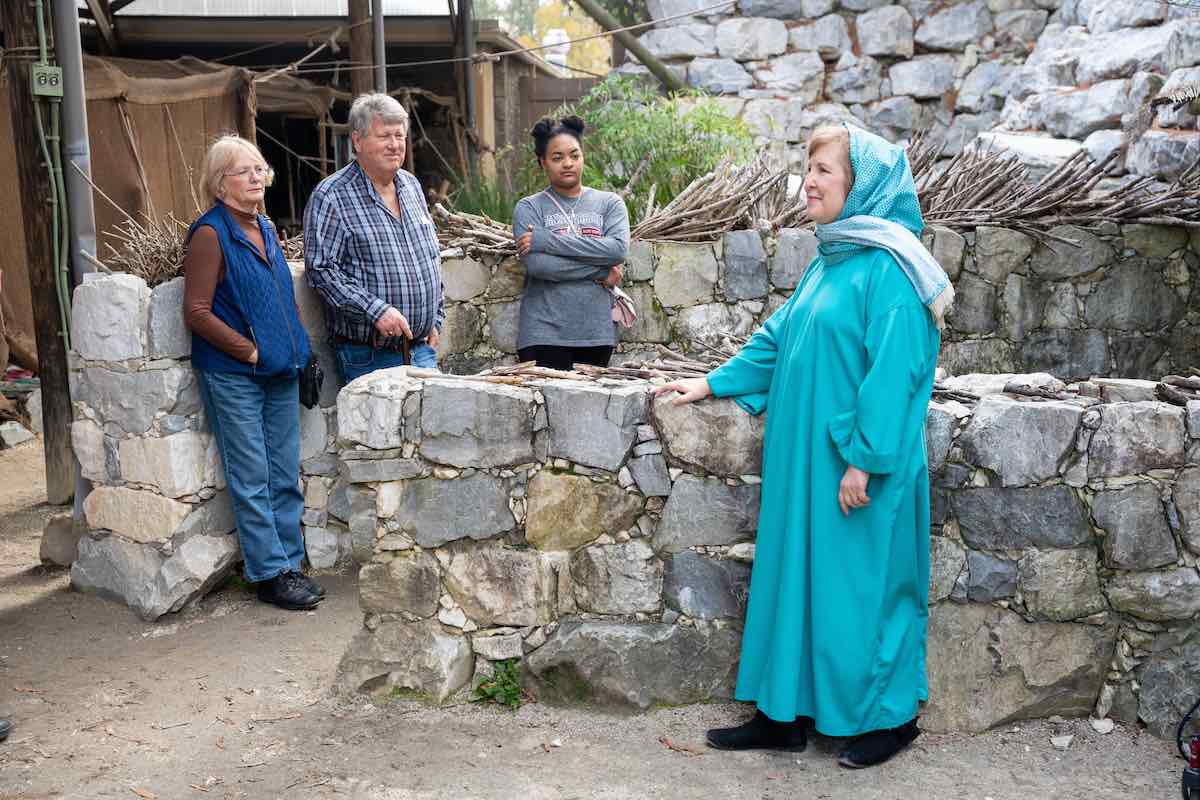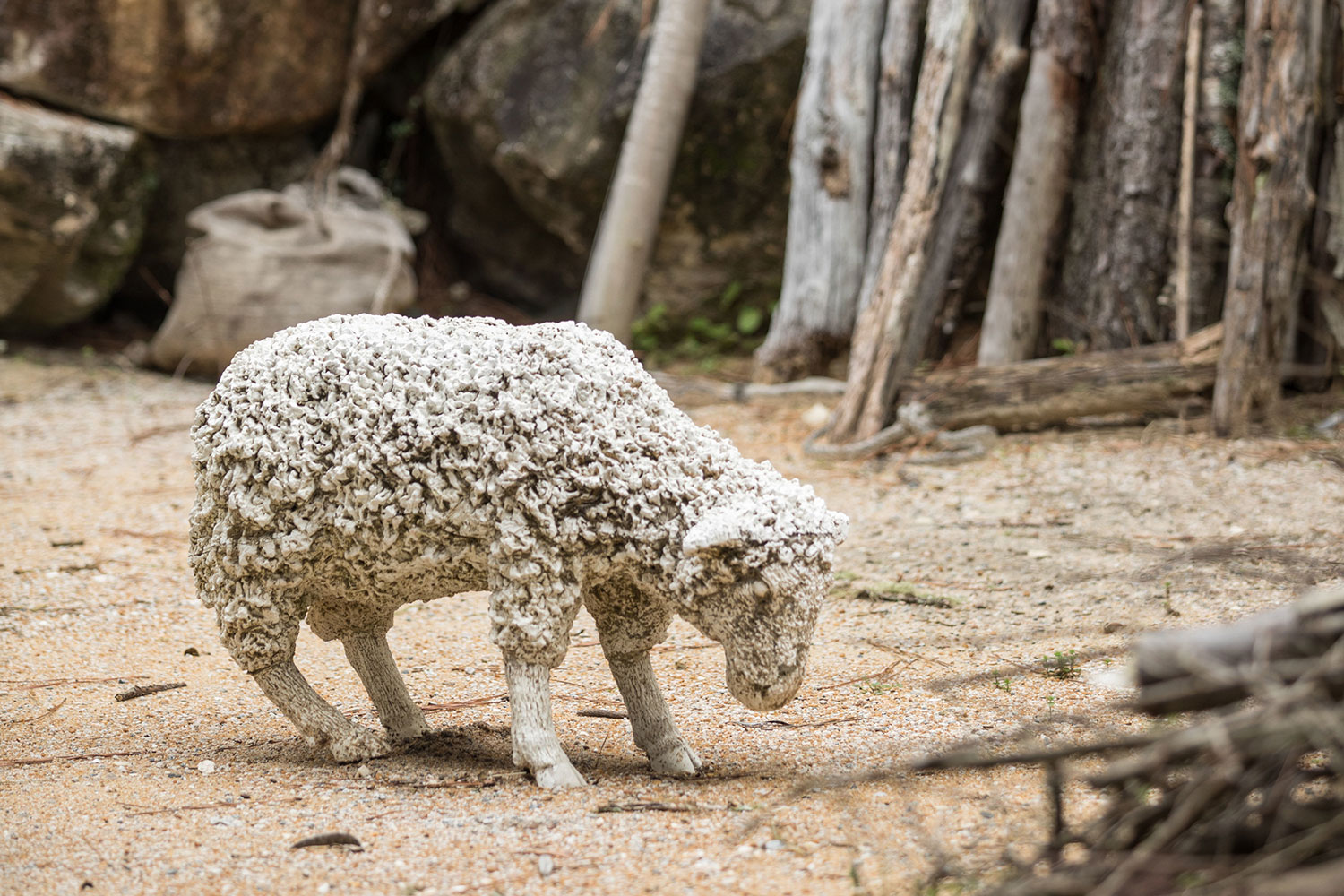Biblical History Center boasts over 250 antiquities that date back thousands of years, from the Bronze Age through the Byzantine Period. Yes, you heard right – one of the biggest and best collections in the world, on par with museums in Paris and New York, lives in LaGrange, Georgia. As a condition of receiving the long-term collection of ancient artifacts from the Israel Antiquities Authority, the center had to meet strict standards for climate and humidity control, as well as engineering a building that was tornado, fire and earthquake proof. (So you should feel very safe inside as you enjoy these treasures!)

In addition to the impressive gallery, Biblical History Center features an archaeological replica garden with full-scale structures found in the daily life of Biblical figures. The area is divided into four to represent the life of a shepherd, the life of a farmer, life in a village and a Roman theater and market.
Have you heard that saying, “Walk a mile in my shoes,” if you really want to know someone? That’s exactly what Biblical History Center is like. The one-two combination of the ancient artifacts gallery and the garden transports visitors back in time. You’ll leave with a great sense of what life was like for people in the Middle East in both Old Testament and New Testament times.
Here are 7 ways the Biblical History Center brings the Bible to life:
1. “Thy word is a lamp unto my feet, a light unto my path” (Psalm 119:105).
In Judaism, the oil lamp is not only a physical source of light but also a spiritual symbol for the wise. Biblical History Center has a great collection of oil lamps that you can picture someone using. Some of them date anywhere from 1500 B.C. to 600 B.C. You can tell because they are saucer and clamshell-shaped.
2. “I am the good shepherd. The good shepherd lays down his life for his sheep” (John 10:14).
From Genesis to Revelations, shepherds are mentioned dozens of times in the Bible. Jesus often used shepherd imagery to teach valuable lessons and referred to Himself as The Good Shepherd. You’ll see examples of how shepherds lived, how they protected their sheep from danger and why this imagery was so relatable to people of the time.

3. “He stretches out the heavens like a canopy and spreads them out like a tent to live in” (Isaiah 40:22).
Back in Old Testament days, the women were the tent makers in their family of nomadic herders. They started as girls learning how to weave tents from goats’ hair or wool. They also were the ones who set up the tents. You’ll appreciate their strength even more when you sit under one of these well-constructed tents. And you’ll have more appreciation for how strong Jael must have been. In the Book of Judges, we hear about how Jael famously drove a tent peg into the Sisera’s temple as he slept.
Bonus: You’ll even be able to touch a piece of coarse horsehair clothing that John The Baptist might have worn. One word: ouch.
4. “Since they could not get him to Jesus because of the crowd, they made an opening in the roof above Jesus by digging through it and then lowered the mat….” (Mark 2:4).
If you ever wondered how easy it would be to remove a roof to get in to see Jesus, Biblical History Center gives a couple of examples of Jewish homes in Bible times. Roofs were usually constructed from beams covered with branches and a thick layer of mud plaster. Large rollers were used to keep the roofs flat and waterproof during the rainy season.
5. “Then they led him away to crucify Him” (Matthew 27:31).
Anytime, but especially when you visit during Lent, seeing three life-size crosses really has an impact. It’s easy to imagine being there at the Place of the Skull as Jesus suffered and died.
6. “They found the stone rolled away from the tomb” (Luke 24:2).
The Jewish tradition was to bury family members within a day of dying. That meant preparations for death had to be made well in advance. For this reason, tombs were hewn from rock just outside the village where the family lived. Because they were expensive, families usually shared the same tomb, sometimes for generations. We get a sense of what that was like at Biblical History Center. Also you’ll see a 4,000-pound stone rolled away from the replica of Jesus’ tomb.
7. “They knew Him in the breaking of the bread” (Luke 24:35).
Inside the museum, there are two rooms that offer examples of first century dining, especially foods that would have been at a Passover meal and the Last Supper. One is a replica of a room discovered at Pompeii and the other recreates a room from the ancient city of Herculaneum. In both, you’ll experience a four-course meal with 15 different food items. What we learn is how eating was really about togetherness. It’s an intimate setting. They reclined at table and shared not only their time but sometimes every last morsel they had.
Did you know that bread is mentioned at least 490 times in the Bible? In Exodus 12:34, we learn that the Israelites had to rush out of Egypt with no time to let their dough rise: “So the people picked up their bread dough before it had risen and carried it on their shoulders in bowls, wrapped up in their clothes.” And we know how symbolic bread becomes. Jesus refers to Himself as The Bread of Life.
Biblical History Center has 23 life-size replicas of structures to bring ancient history to life. You can also personalize your tour with a special archaeological dig for children. Or visit during one of their many new events such as an Evening in the Theater, an Olive Festival, a Plants of the Bible tour and more.